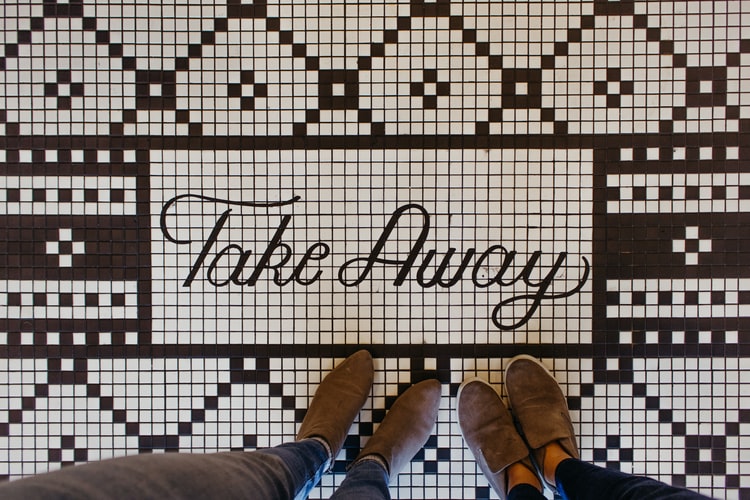The foodservice industry is remarkable for many reasons, the hard work, the long hours, the fierce competition, and the sheer number of operations. Making a go of a restaurant has many challenges; around 60 percent of new restaurants fail within the first year. And nearly 80 percent shutter before their fifth anniversary. This is unfortunately the result of the difficulties in managing labor, controlling food costs, and low profit margins, and it seems you have to be just plain lucky — or have incredible food, a very solid business model, excellent management and effective marketing.
Consider also that foodservice is a high-risk enterprise, and those that get in trouble with foodborne illness, sanitation issues, or a customer injury, face liability, as well as the loss of reputation and the confidence of customers.
With these problems as a backdrop, COVID-19 might just be the last straw for many operations, which is tragic, given that so many workers depend on the industry for a livelihood, and consumers may no longer be able to enjoy the convenience and the wide variety of choices they have come to expect.
The FDA has recently published “Best Practices for Re-Opening Retail Food Establishments During the COVID-19 Pandemic.” This is helpful, and the industry has been expecting to receive such guidance. Now it falls on the local and state health departments to promulgate these standards into regulations and start enforcement.
The USFDA Food Code, adopted by most health departments, already has numerous provisions for communicable disease controls, and the provisions for exclusion or restriction of ill workers, sanitation and personal hygiene should be familiar concepts.
The challenge will be to translate what is known to be effective against the foodborne microorganisms in the “back of the house” into COVID-19 preventive measures in the “front of the house.” Customers and their habits cannot be controlled by the operator in the same way as worker practices, so a paradigm shift needs to take place.
I do not believe anyone has at this time a perfect answer to airborne transmission of COVID-19 in a restaurant, and therefore it is likely that we are going to see localized outbreaks with restaurants as a common exposure. With that will come exposure of the business to legal liability.
There is proposed federal legislation at this time to address the potential business risk that will come from lawsuits and COVID-19; but at the same time, we have FDA informing us of the best practices to reopen a restaurant. It is very likely that the local health departments will soon be tasked with regulation, inspection and investigation of restaurant related COVID-19 clusters. The public can be expected to file complaints, especially if they have observed a breakdown in protocols; if an outbreak occurs, the results could be devastating for an entire brand.
In light of the public health and business risks, restaurant and bar operators must establish due diligence and implement the guidance we now have. The following check list is adapted from the afore mentioned FDA best practices guidance, with some additional recommendations:
- Inform employees that if they have tested positive for COVID-19, or have been in contact with a known positive case, that they must disclose this information immediately to management.
- Exclude all employees exhibiting any symptom of communicable disease while on the job.
- Remind employees not come to work when ill for any reason, but specifically if they have coughing, shortness of breath, and/or fever, and report such symptoms in themselves, family members, and close contacts.
- Maintain a sick-log and watch for an uptick in employees calling in ill. Contact the health department if you suspect an outbreak is occurring.
- Provide a written policy describing return to work procedures following the FDA guidance.
- Post the following statement at the guest entrance “DO NOT ENTER if you are known to be positive for COVID-19 or have a cough, shortness of breath or fever.
- Maintain a 6-foot distance between guests in seating areas, waiting areas, check out areas, or between guests on lines awaiting entry.
- Place hand sanitizer stations at the guest entrances and at bathrooms, monitor guest behavior and ensure the sanitizers are being used.
- Remove all common items from tables, including condiments and menus.
- Discontinue salad bars and buffet type self-service.
- Maintain ware-washing equipment, proper wash temperatures and sanitizer concentrations.
- All employees in contact with guests should wear a mask or other facial covering.
- Bussers and others handling or cleaning used utensils or guest tables should be wearing sanitary gloves. The gloves need to changed frequently, but especially between handling soiled items and serving food.
- Perform daily temperature checks of employees at the start of each meal period. Any employees with elevated temperatures should be excluded.
- Observe guests for excessive coughing or sneezing, it may be necessary to ask such guests to leave the premises.
- Maintain a high level of sanitation in restrooms, with hourly cleaning and sanitizing of fixtures and common touch points.
- Ensure bathroom hand sinks are stocked with soap, warm water, paper towels or other approved hand drying method.
- Use approved hard surface sanitizers following label directions, and clean and sanitize guests’ tables, chairs, and cushions between guests.
- Clean and sanitize guest area floors nightly.
We should recognize that especially in the beginning, implementing all of the preventive measures for COVID-19 may be difficult, or even impossible for some establishments; however, survival chances are better for those that are able restore public confidence in dining at their establishment. The public is expecting to see an obvious commitment by restaurants to their health and safety, and the best of the industry will step up to the plate.
